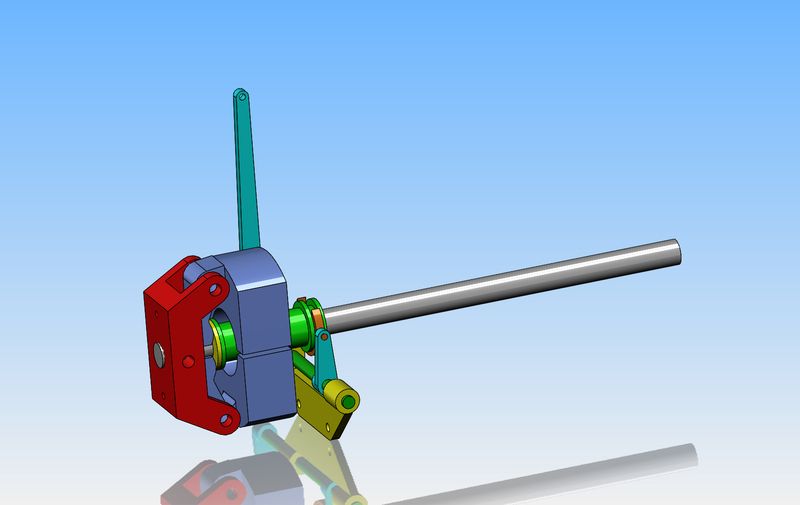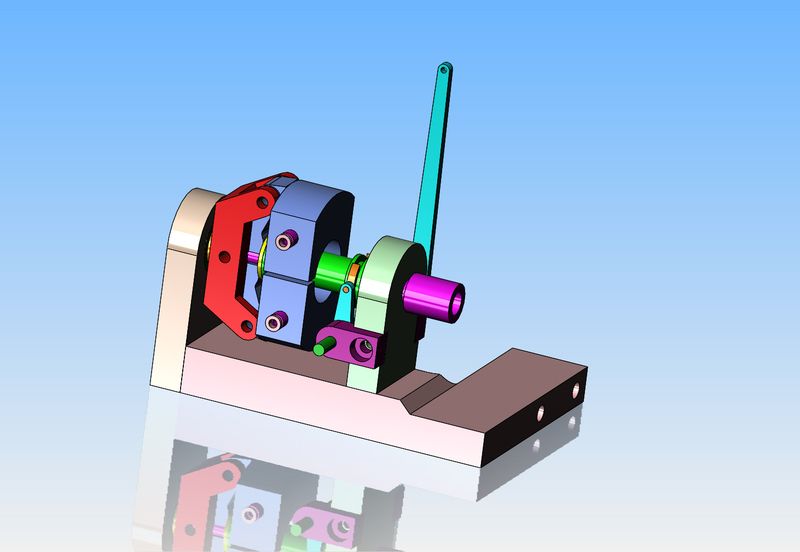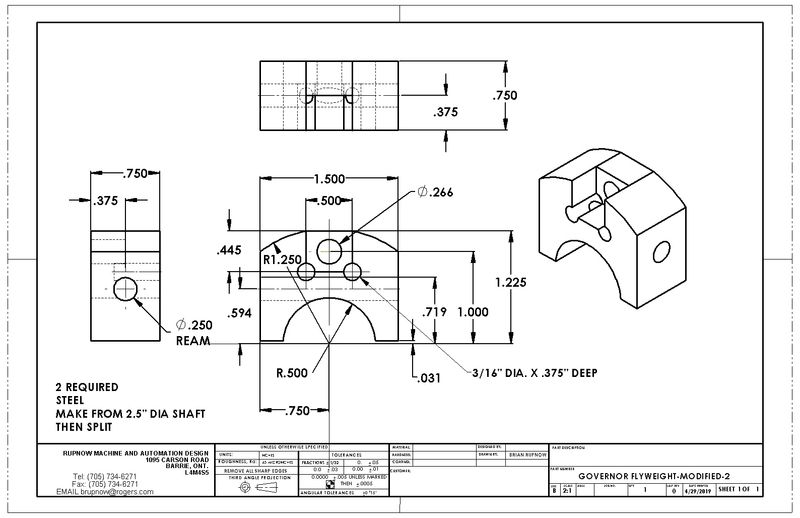Lets talk about engine speed governors. I am well acquainted with flyball governors and flywheel mounted governors to control the lockout rod on hit and miss engines. I have built many of them with varying degrees of success. Having just completed my sideshaft horizontal engine, I am interested in putting a governor on it, similar to the governor envisioned by Edgar Westbury who originally designed a governor as an "add on" to the Centaur engine. This governor fits onto an extension of the sideshaft and movement of the governor weights control how much the carburetor throttle-plate is opened or closed, by a linkage between the governor and the throttle on the carburetor. It is a centrifugal governor, controlled by the speed of the engine. Let us assume that I want the engine to run at an idle speed when under no load, but as the load increases, the engine will open it's throttle proportionally to compensate for any load which makes the engine want to stall. In order to do this, the governor weights would have to be at the full extent of their travel, outwards away from the center shaft when the engine is running at idle speed. As load from a driven device caused the engine to slow down, the weights would begin to move closer to the shaft because of spring tension and a lessening of centrifugal force. This in turn would move the lever, causing the throttle to open more and increase the engine speed to offset the slowing caused by the load.----SO--My question is, where would those governor weights lie in relation to the central shaft when the engine was shut off. Would they lie close to the central shaft causing the carburetor throttle to be "wide open", but with very weak springs so that they fly out quickly to their full extent and close the throttle plate to "idle" condition as soon as the engine goes from zero rpm to idling speed? I can't really see it working any other way. Does this mean that when I start the engine I am always going to be starting it with the throttle plate in the "wide open" position, and as soon as it starts the governor closes the throttle to "idle" speed?

















![MeshMagic 3D Free 3D Modeling Software [Download]](https://m.media-amazon.com/images/I/B1U+p8ewjGS._SL500_.png)

































































